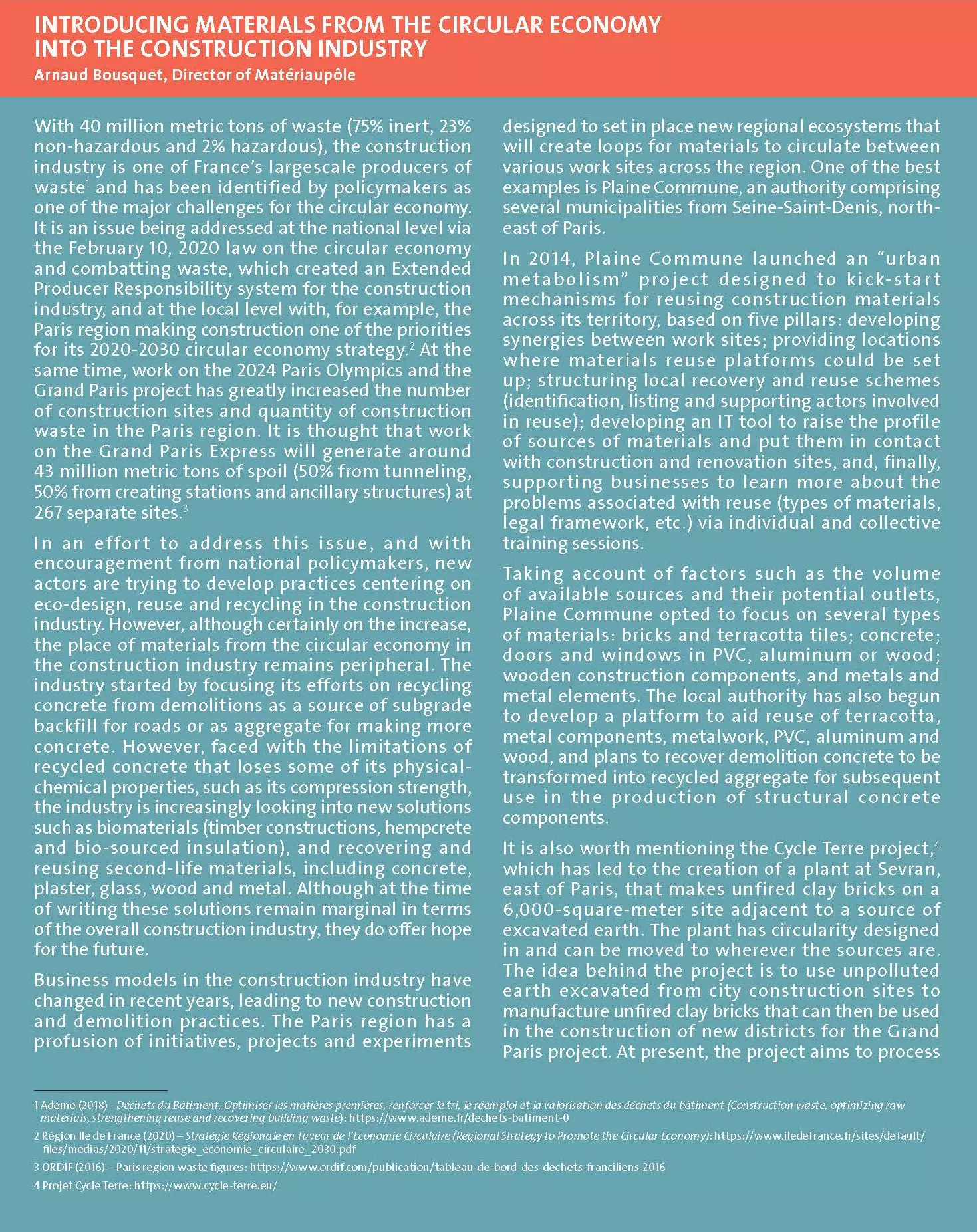Arnaud Bousquet
Director of Matériaupôle
With 40 million metric tons of waste (75% inert, 23% non-hazardous and 2% hazardous), the construction industry is one of France’s largescale producers of waste1 and has been identified by policymakers as one of the major challenges for the circular economy. It is an issue being addressed at the national level via the February 10, 2020 law on the circular economy and combatting waste, which created an Extended Producer Responsibility system for the construction industry, and at the local level with, for example, the Paris region making construction one of the priorities for its 2020-2030 circular economy strategy2. At the same time, work on the 2024 Paris Olympics and the Grand Paris project has greatly increased the number of construction sites and quantity of construction waste in the Paris region. It is thought that work on the Grand Paris Express will generate around 43 million metric tons of spoil (50% from tunneling, 50% from creating stations and ancillary structures) at 267 separate sites3.
---
1 Ademe (2018) - Déchets du Bâtiment, Optimiser les matières premières, renforcer le tri, le réemploi et la valorisation des déchets du bâtiment (Construction waste, optimizing raw materials, strengthening reuse and recovering building waste): https://www.ademe.fr/dechets-batiment-0
2 Région Ile de France (2020) – Stratégie Régionale en Faveur de l’Economie Circulaire (Regional Strategy to Promote the Circular Economy): https://www.iledefrance.fr/sites/default/files/medias/2020/11/strategie_economie_circulaire_2030.pdf
3 ORDIF (2016) – Paris region waste figures: https://www.ordif.com/publication/tableau-de-bord-des-dechets-franciliens-2016



